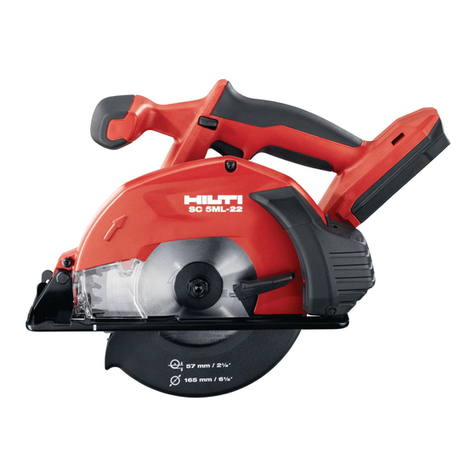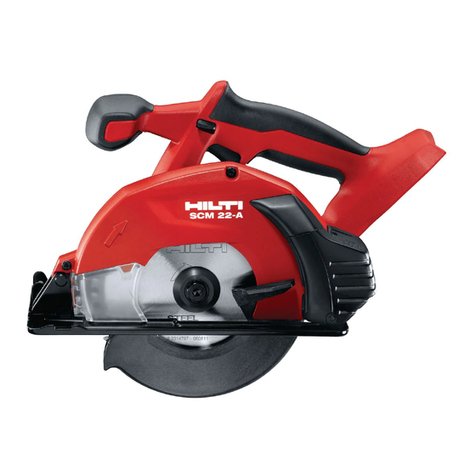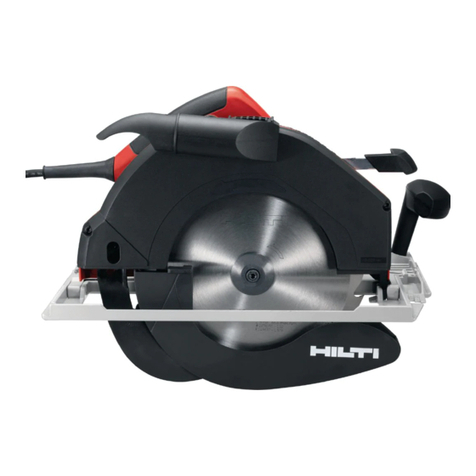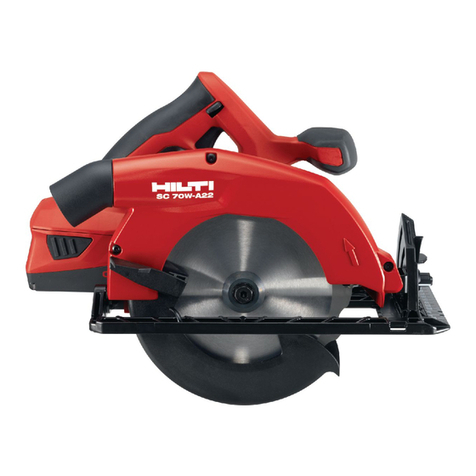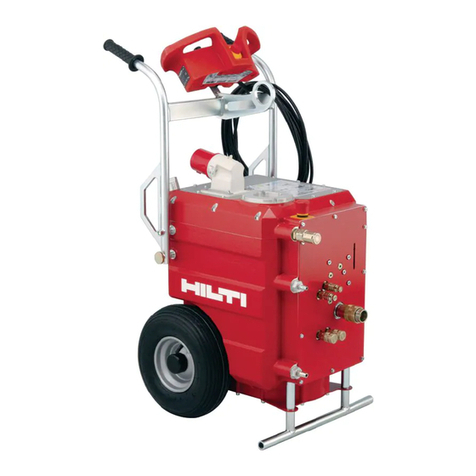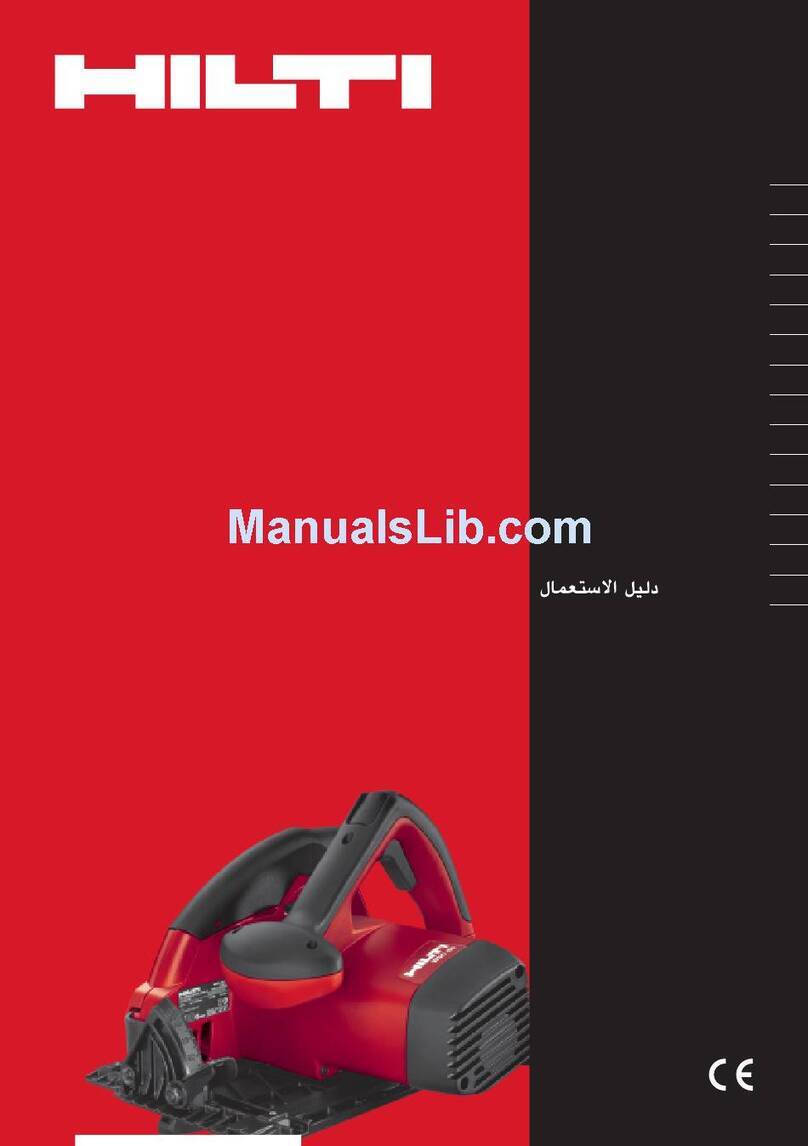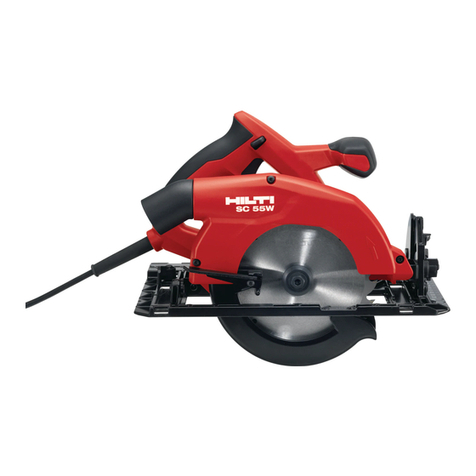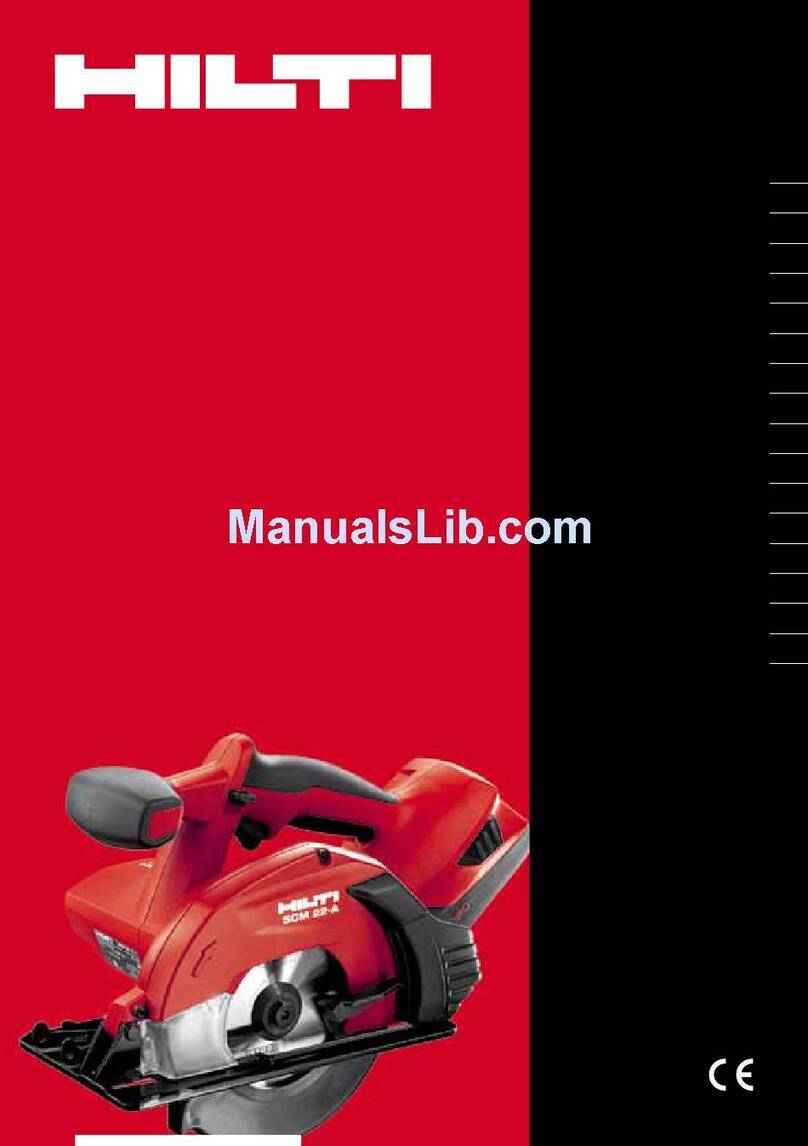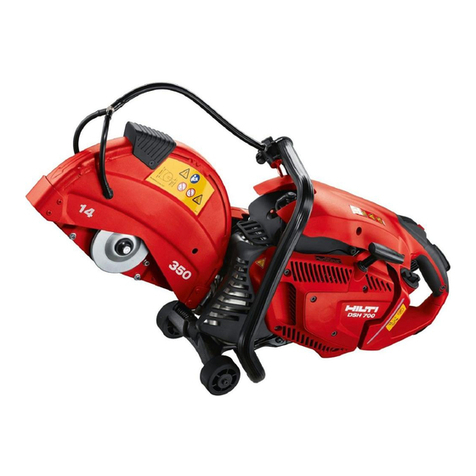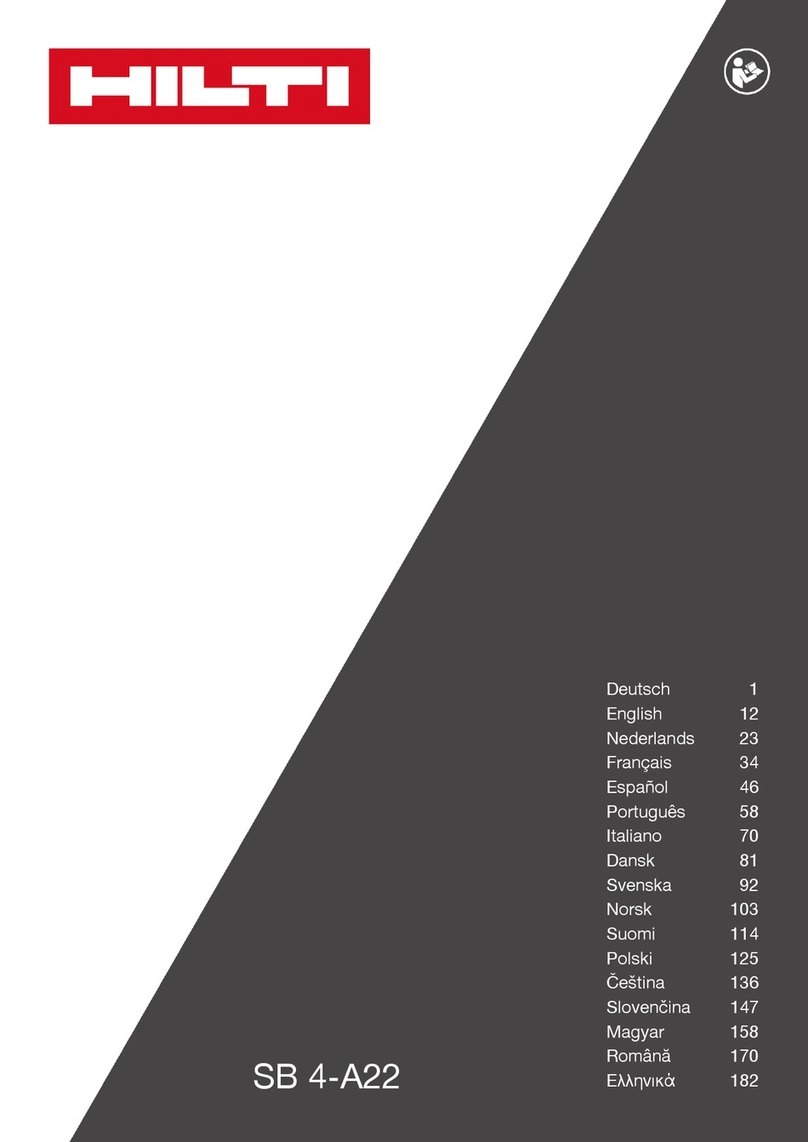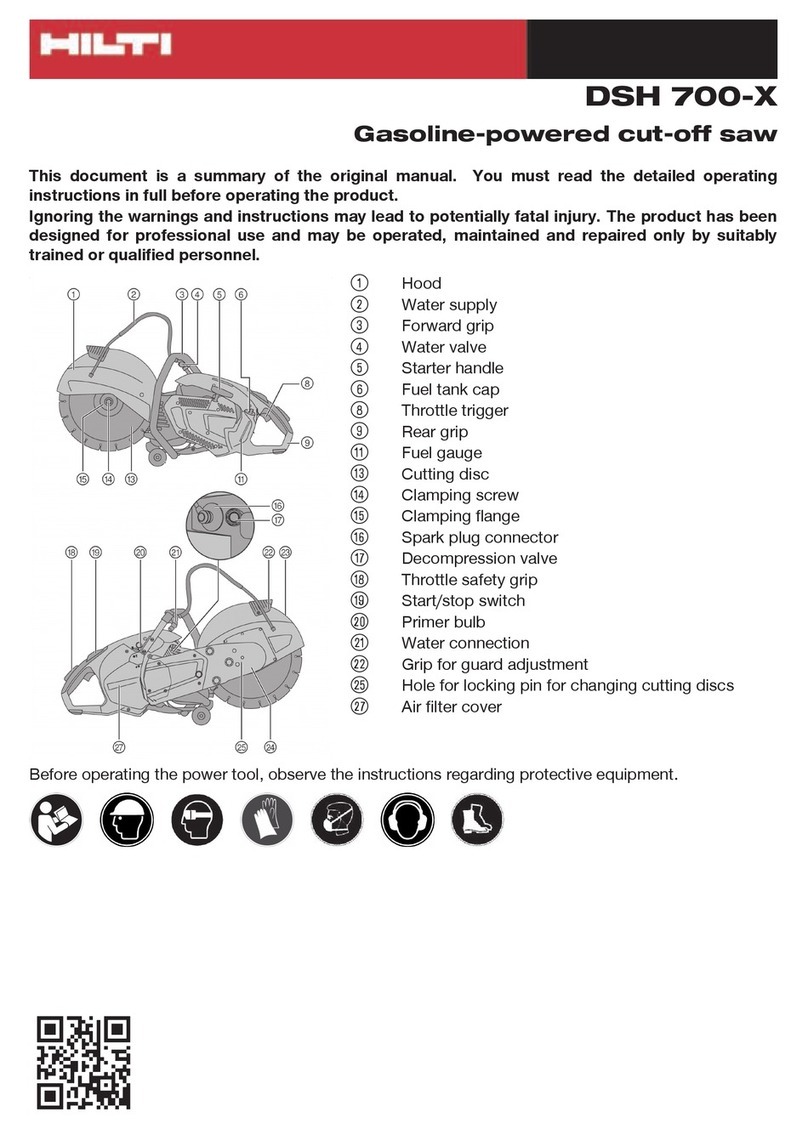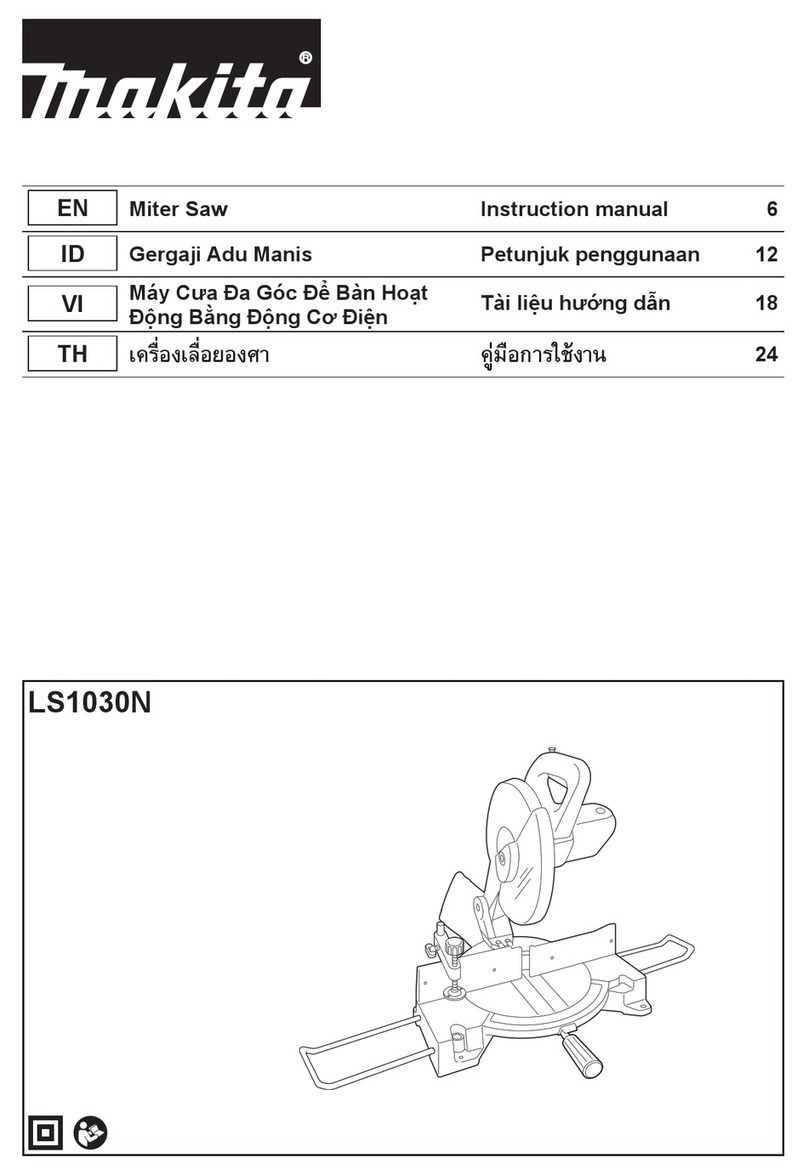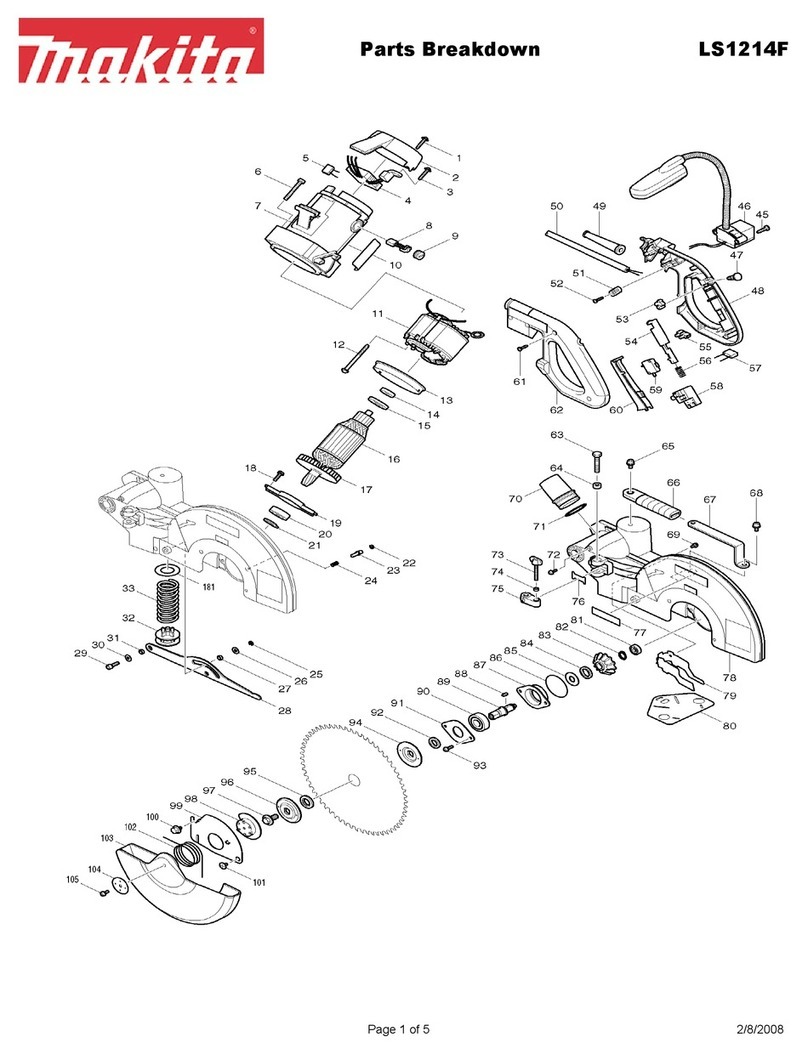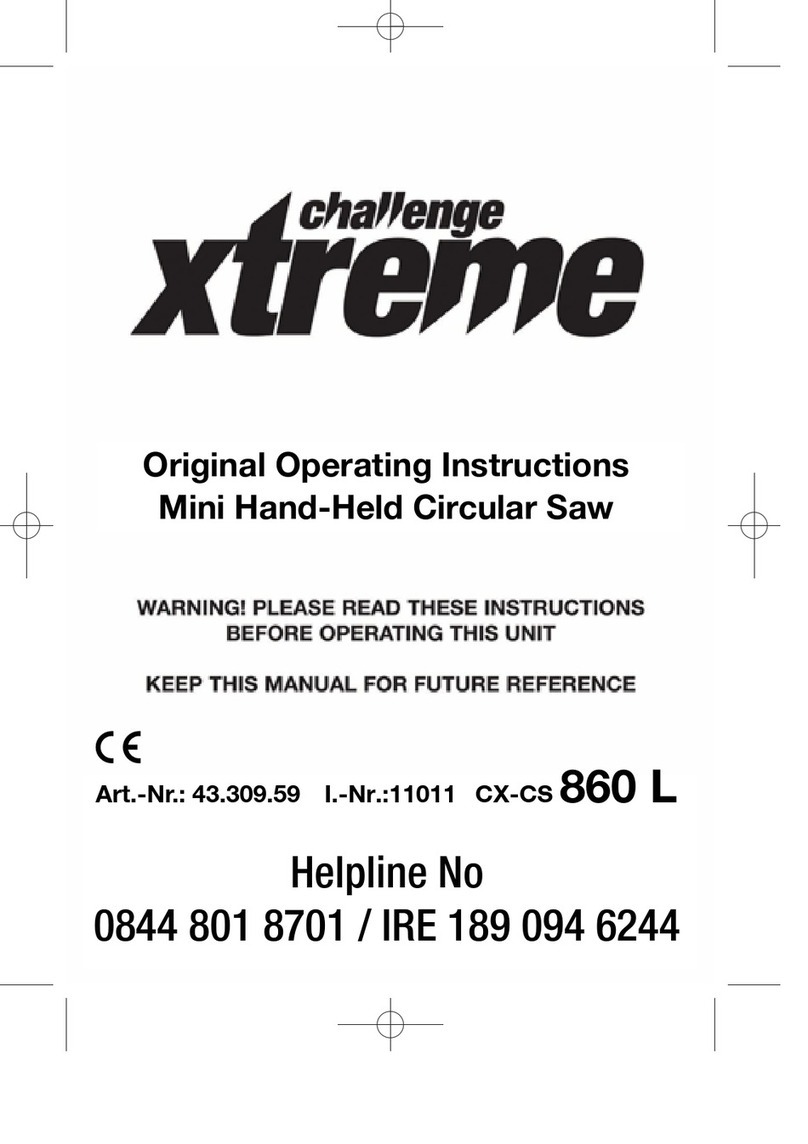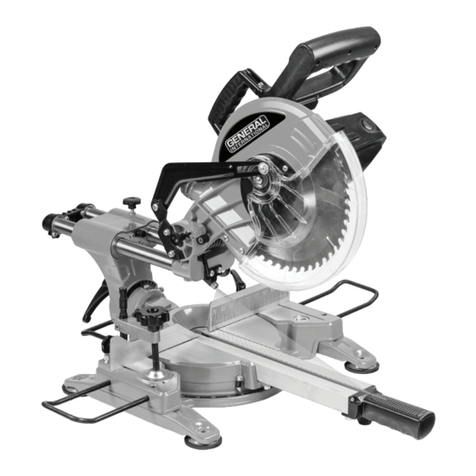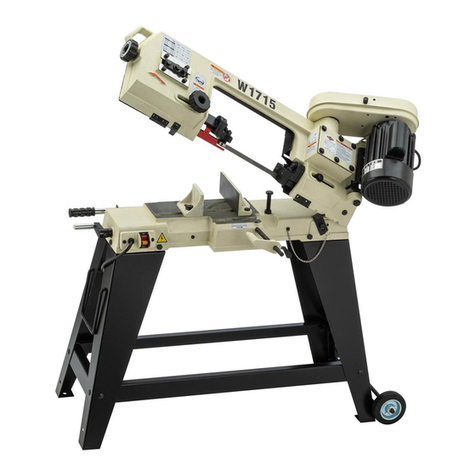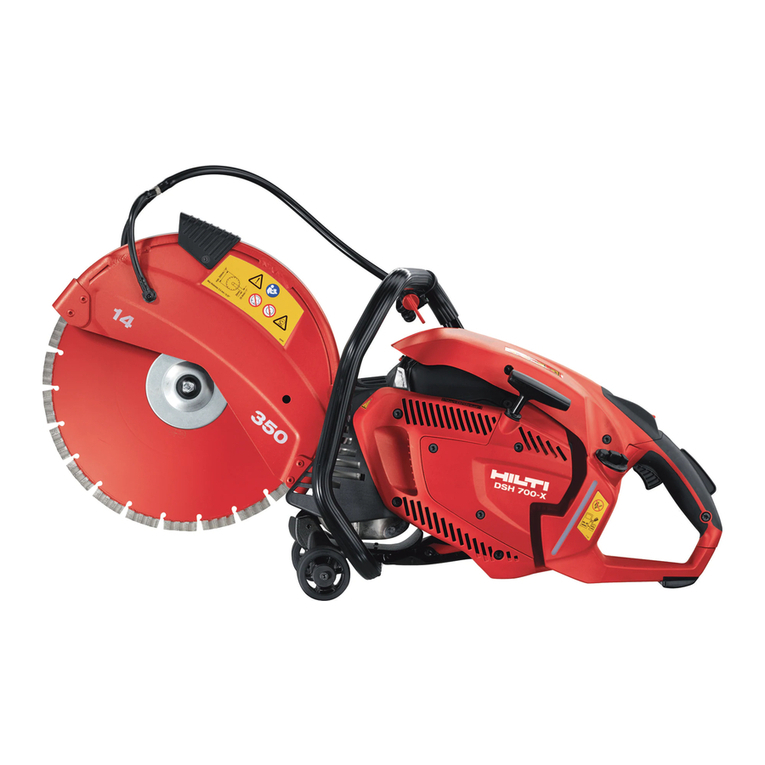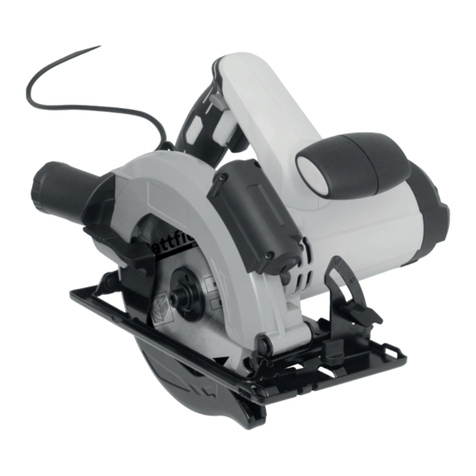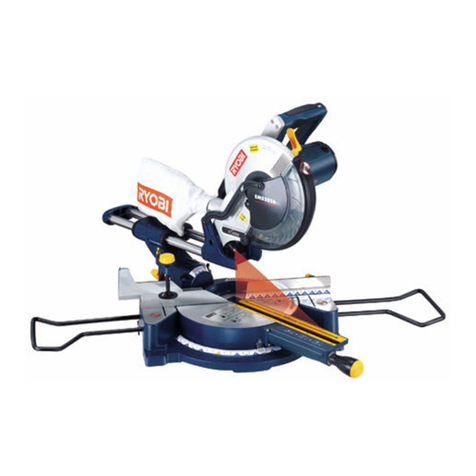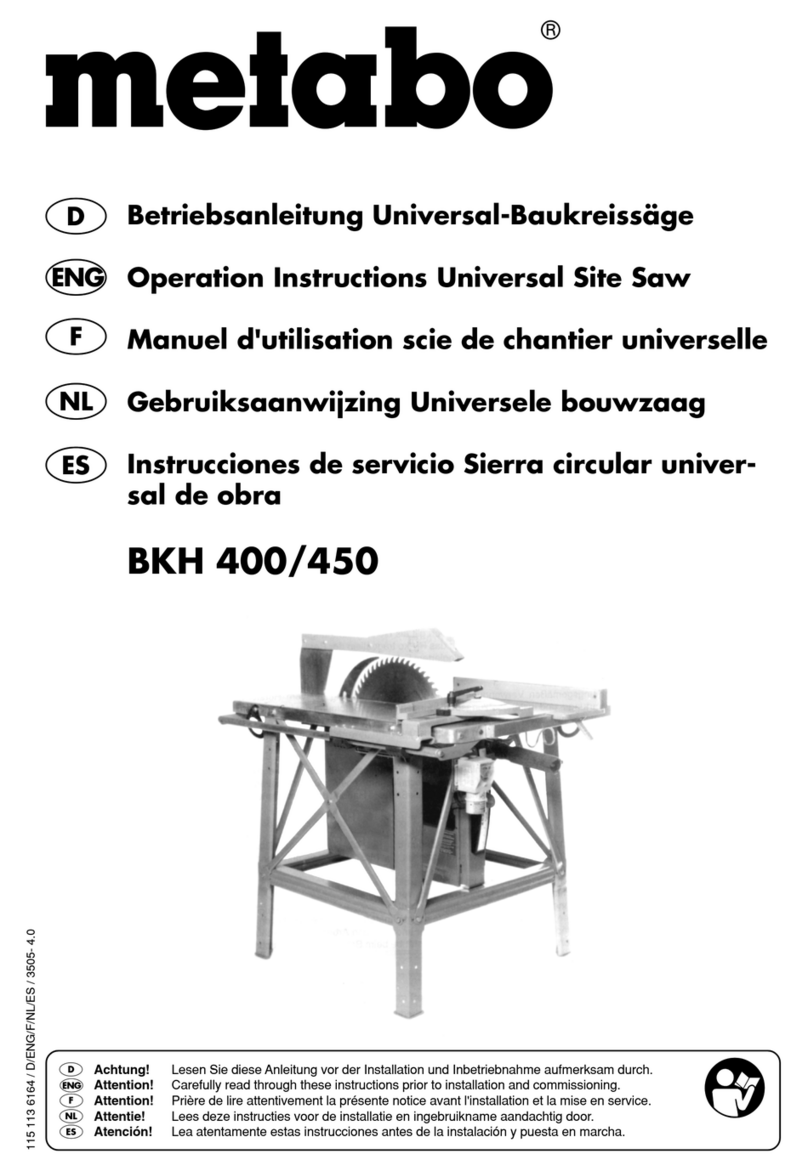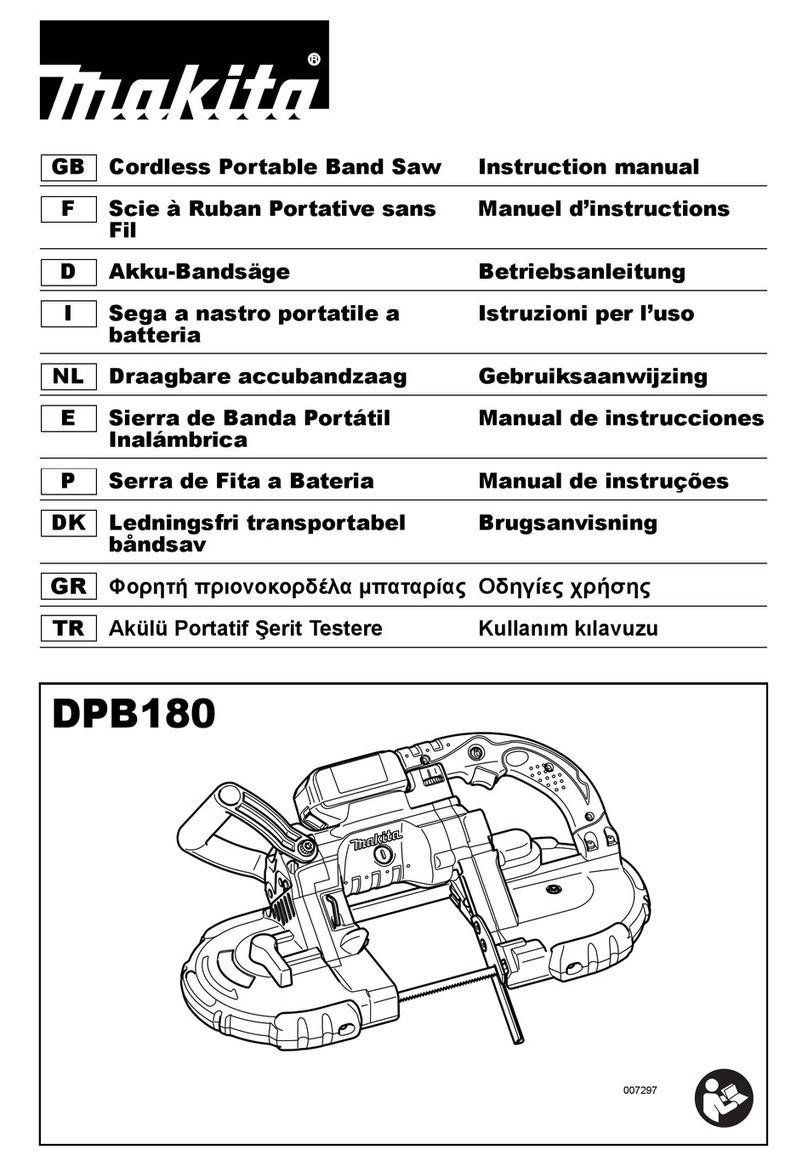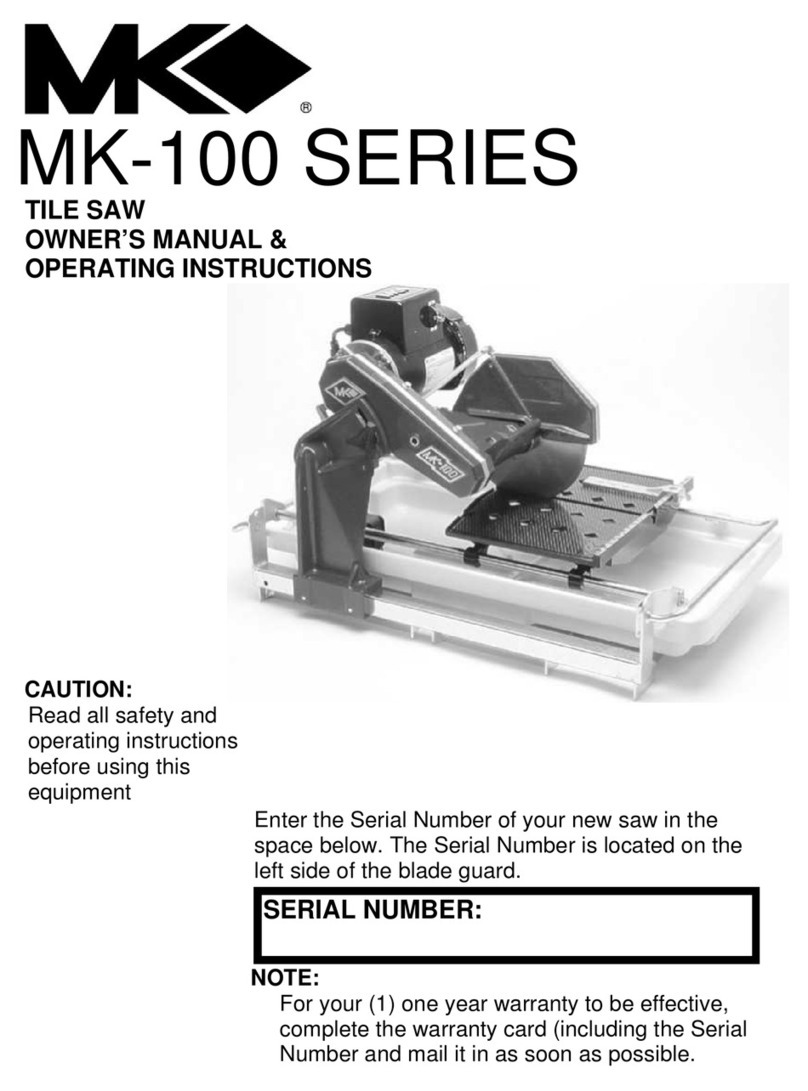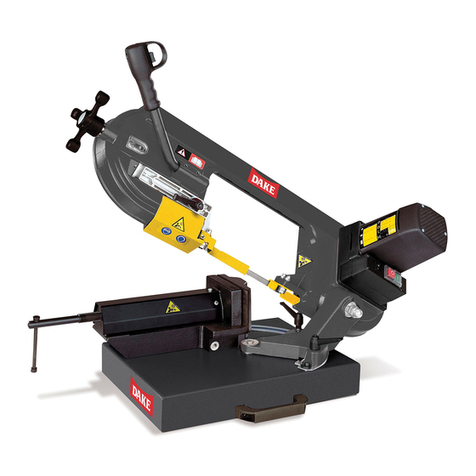
4 English 2243482 *2243482*
Battery tool use and care
▶Recharge only with the charger specified by the manufacturer. A charger that is suitable for one type
of battery pack may create a risk of fire when used with another battery pack.
▶Use power tools only with specifically designated battery packs. Use of any other battery packs may
create a risk of injury and fire.
▶When battery pack is not in use, keep it away from other metal objects, like paper clips, coins,
keys, nails, screws or other small metal objects, that can make a connection from one terminal to
another. Shorting the battery terminals together may cause burns or a fire.
▶Under abusive conditions, liquid may be ejected from the battery; avoid contact. If contact
accidentally occurs, flush with water. If liquid contacts eyes, additionally seek medical help. Liquid
ejected from the battery may cause irritation or burns.
▶Do not use a battery pack or tool that is damaged or modified. Damaged or modified batteries may
exhibit unpredictable behaviour resulting in fire, explosion or risk of injury.
▶Do not expose a battery pack or tool to fire or excessive temperature. Exposure to fire or temperature
above 130° C (265 °F) may cause explosion.
▶Follow all charging instructions and do not charge the battery pack or tool outside the temperature
range specified in the instructions. Charging improperly or at temperatures outside the specified range
may damage the battery and increase the risk of fire.
Service
▶Have your power tool serviced by a qualified repair person using only identical replacement parts.
This will ensure that the safety of the power tool is maintained.
▶Never service damaged battery packs. Service of battery packs should only be performed by the
manufacturer or authorized service providers.
2.2 Safety instructions for reciprocating saws
▶Hold the power tool by insulated gripping surfaces, when performing an operation where the
cutting accessory may contact hidden wiring. Cutting accessory contacting a "live" wire may make
exposed metal parts of the power tool "live" and could give the operator an electric shock.
▶Use clamps or another practical way to secure and support the workpiece to a stable platform.
Holding the workpiece by hand or against your body leaves it unstable and may lead to loss of control.
2.3 Additional safety instructions
▶Use the product and accessories only when they are in perfect working order.
▶Never tamper with or modify the product or accessories in any way.
▶Dust produced by grinding, sanding, cutting and drilling can contain dangerous chemicals. Some
examples are: lead or lead-based paints; brick, concrete and other masonry products, natural stone
and other products containing silicates; certain types of wood, such as oak, beech and chemically
treated wood; asbestos or materials that contain asbestos. Determine the exposure of the operator and
bystanders by means of the hazard classification of the materials to be worked. Implement the necessary
measures to restrict exposure to a safe level, for example by the use of a dust collection system or by
the wearing of suitable respiratory protection. The general measures for reducing exposure include:
▶working in an area that is well ventilated,
▶avoidance of prolonged contact with dust,
▶directing dust away from the face and body,
▶wearing protective clothing and washing exposed areas of the skin with water and soap.
▶Risk of injury by falling tools and/or accessories. Before starting work, check that installed accessories
are secure.
▶Keep the air vents clear at all times. Risk of burn injuries due to blocked air vents!
▶Take frequent breaks and do physical exercises to improve the blood circulation in your fingers. High
vibration during long periods of work can lead to disorders of the blood vessels and nervous system in
the fingers, hands and wrists.
▶Do not attach a belt hook to this product.
▶Do not look directly into the light source (LED) of the product and do not aim the beam at other persons’
faces. Risk of dazzling or eye damage.
▶The user and persons in the vicinity must wear suitable eye protection, hard hat, ear protection, protective
gloves and light respiratory protection while the product is in use.
▶Flying fragments can injure the body and eyes. Wear personal protective equipment and always wear
eye protection and protective gloves.





















